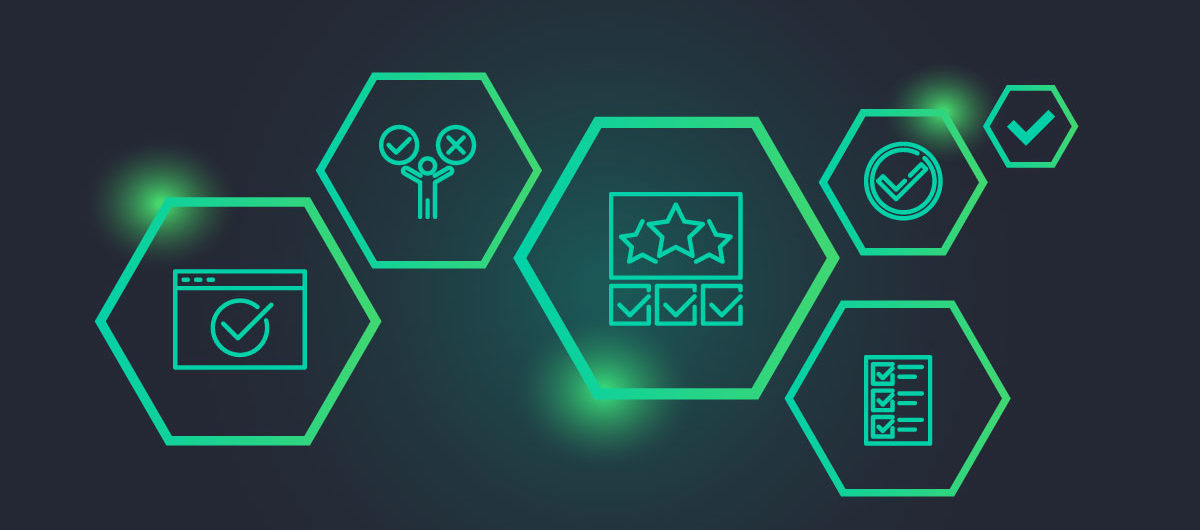The General Data Protection Regulation (GDPR) has been around since 2018, with a series of massive fines already issued to companies that violated the rules.
But these guidelines go way beyond Europe. The Health Insurance Portability and Accountability Act of 1996, also known as HIPAA, is a US federal law that applies to Personal Health Information (PHI). The California Consumer Privacy Act (CCPA) has already taken effect in early 2020. Virginia is also planning to launch it’s very own Consumer Data Protection Act (CDPA) in early 2023.
Database Compliance: A DevSecOps Essential
Database compliance is a set of regulations that secures customer data and prevents data breaches. It may seem straightforward, but many businesses are still overlooking database compliance automation and its benefits. Exposure or leakage of user data can harm your revenue streams and cause brand damage. In order to avoid unnecessary complications, you need to bake database compliance automation directly into your DevSecOps.
Here are just a few pointers to get started:
- Compliance automation is a DBA essential. As a DBA, you need to be up-to-date with new information concerning the latest compliance regulations regarding the data and code that is stored in your databases. It’s not only about new regulations. The existing ones are constantly being updated and revised with changes that need to be addressed immediately at the database administration level.
- Regardless of the regulations that apply to your business, you need to implement the “least privilege” approach while granting database access. This policy states that users receive the minimum amount of privileges that are sufficient to perform their duties. This is another essential that everyone knows they need, but which is still often overlooked.
- Some vulnerabilities can be easily avoided during the coding process by applying secure coding practices such as building architecture and design for security, as well as transferring sanitized data. The same principles can be implemented in the database to achieve optimal security standards. You can replace manual processes with secure automated practices in line with company policies and regulations.
Related: Top 10 Database Compliance Best Practices
What is Continuous Compliance Automation (CCA)?
The aforementioned best practices should be backed up by a sound DevSecOps approach, which involves a Shift-Left mentality. Compliance needs to be blended into application and database processes. This way, security becomes an essential part of the pipeline and stays relevant throughout the entire process, starting right from the design, all the way to deployment.
In a nutshell, CCA helps organizations eliminate manual involvement in the security compliance process within complex DevOps environments.
CCA tools take care of role management, check your application against the current policies, and store data about all changes made to the database for later audit. The central feature is obviously automation, which reduces risks, promotes faster development speed with fewer bottlenecks, and requires less post-release patching. Being a part of DevSecOps, CCA tools also smoothen the collaboration across the various departments in the organization.
These strategies will help you implement the automation and transition faster.
1 – Deal with configuration drifts before they become a problem
Since DevOps is built upon driving frequent updates, modifications in databases also need to become iterative to keep up with the other parts of the pipeline. The problem is though that databases still require a good amount of manual work which often leads to configuration drifts. The main culprit – direct out of process (undocumented) changes made directly to the database.
Release bottlenecks are created due to conflicting changes that are not in sync with the main release or unique changes to some of the environments. This results in the creation of inconsistencies between the databases that should ideally be identical for a smooth release. The centralized nature of CCA tools helps in monitoring the changes and identifying the discrepancies early on.
Related: Demystifying Database Configuration Drifts
2 – Ensure compliance with relevant policies
Developers and IT teams are familiar with policies and standards when it comes to writing code, but they often lack knowledge of database regulations and requirements. As a result, the problems start surfacing only after the release. DBAs at the same time, are making changes manually, which in itself slows down the process, creates bottlenecks, and leads to human errors.
Compliance automation tools not only help automate the pipeline completely, but also make sure the database is in-line with the policy at all times. The system will identify possible issues and notify you, allowing you to exclude bad code before it damages the performance of the application or creates regulatory risks that may put your database information at risk.
3 – Enforce Database Source Control
Implementing and enforcing database source control helps with a critical goal – creating a defined starting point for deployments. Once that point has been established, everything becomes easier. This means you can start version controlling crucial aspects such as schemas, builds, validations, comparisons, and all related procedures to enhance quality and productivity.
A sound source control solution should be able to generate creation scripts for all database objects, while allowing seamless deployments and roll backs from specific versions, also in production. It should also be capable of rebuilding or tearing down a database in any pre-production environment for maximizing flexibility. Only specified personnel should be able to perform these actions.
You should also be familiar with release concepts for the database. For a detailed overview of state and migration-based deployments, follow the link below:
State-Driven vs Migration-Driven DB Deployments
DBmaestro: Compliance Automation for DevSecOps
The benefits that DevSecOps brings cannot be overstated. With this mindset, CCA solutions help onboard the entire organization to enhance security.
Firstly, they improve automation and security procedures, while helping accelerate the entire software development life cycle (SDLC). Secondly, they also improve communication between the various teams (and departments), enhance visibility, and help shift the focus to quality improvement. Let’s take a closer look at the advantages of this automated approach.
- Roles and Permissions – With DBmaestro, your life as a DBA becomes much easier. You can implement the “least privilege” philosophy easily, while also enforcing policies that have been created in accordance with the latest regulatory developments. Roles and permissions can be revoked or edited with just a few clicks. A huge step towards compliance.
- Automated Reports and Audit Trails – Simply put, Continuous Automation Compliance (CCA) solutions generate audit trails smoothly without requiring human intervention like before. Forget the long and cumbersome Excel documents that were a nightmare to manage on an ongoing basis. You can now generate and share reports with a few clicks.
- Better Damage Control and Mitigation Times – Database Continuous Automation Compliance drastically reduces the risk of undetected human errors when it comes to fixing bottlenecks and post-deployment issues. It enhances visibility and adds prediction into your processes which makes it easier to identify version drifts and other inconsistencies.
Besides advancing your delivery pipeline in general, DevSecOps empowers the DBAs, IT teams, and of course the developers. You essentially get self-sufficient teams by providing them with an automated pipeline for continuous development, testing, and deployment, with all security and compliance prerequisites baked in. They become active shareholders in the process.
Switch to a Proactive Mindset with Database Compliance Automation
The bottom line is that you need to govern your database releases and operations with a proactive approach and automate processes to promote a Shift-Left mindset shift with your database, IT, and development teams. Doing so with a DevSecOps approach will enhance consistency, traceability, and audibility – all key components when it comes to compliance.
Database compliance automation tools for DevOps are changing and evolving rapidly as there many vendors that cover different subdomains across applications, infrastructure and databases. You need to make sure that the solution you are implementing is able to integrate with top DevOps tools, has scaling-up capabilities, and provides ease-of-use with quick onboarding.
The business impact of having a database Continuous Compliance Automation solution cannot be understated. It will help you enforce security and compliance across the entire database domain, essentially completing the missing link in your SDLC. You’ll be wasting less time and resources on patching holes, while also creating a seamless DevOps pipeline for optimal results.
You can now use policy-driven automated controls to scale up fast, without sacrificing quality or security. Automate your database compliance and security now.





